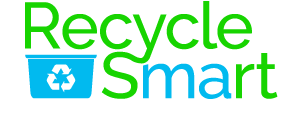Recycling is WORK!
Many people want to recycle and protect the environment, but they do not know how to recycle correctly. Historically, China purchased most of the single stream recycling generated and collected in the United States. The recycling loads that China purchased from the US were highly contaminated due to poor recycling habits in the US. Beginning in 2017, China started to clamp down on the acceptable levels of contamination of the recyclables they were importing. As a result, less material is being exported to China and there is a glut of recyclable material in the US. Many of the recycling facilities are experiencing a stockpile of the single stream materials without an outlet or purchaser of the product.
Unfortunately, in trying to do the right thing and recycle, consumers are throwing items in the recycling bin which should be in the compost or trash bin. Placing items in the wrong bin has the risk of contaminating an entire load of recycling. The general population does not understand that recycling takes research and “is work”. If we WORK to recycle properly, the quality improves, and the recycling product is marketable.
Many folks take items and throw them in the recycling bin because they think it is the right thing to do and it feels good to recycle. They may not think about whether the item is in fact recyclable. State and Federal agencies trying to promote good recycling habits have established websites, kits and other materials to educate the consumer. Massachusetts Department of Environmental Protection (MassDEP) recently launched a website called recyclesmartma.org. Here residents can plug an item’s name into a search line and check the “Recyclopedia” to see if something is recyclable. This is what I mean by recycling is “WORK”. If we question whether something should go in the recycling bin, we should research. If we don’t want to WORK and research, another line of reasoning is “When in doubt, keep it out!”. If you are uncertain if something is recyclable, keep it out of the recycling bin and eliminate the risk of contaminating the load.
A good example of the WORK involved in recycling is where I recently witnessed a homeowner leave a large cardboard box at the curb for recycling. Along with the box, they left the polystyrene insert in the box. The cardboard was recyclable, but the insert would contaminate the load. We must WORK to separate the non-recyclable materials and put them with the trash. This is just one example of many demonstrating how recycling takes WORK to do it correctly.
As a company, we are committed to education and promoting responsible recycling. If our customers are properly educated, we as a company can feel good about the recyclables we bring to the market.
Please utilize the resources available to help us Recyclesmart!

